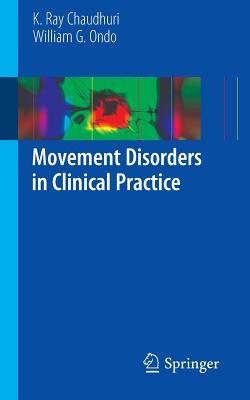
- We will send in 10–14 business days.
- Author: K Ray Chaudhuri
- Publisher: Springer
- ISBN-10: 184996064X
- ISBN-13: 9781849960649
- Format: 12.7 x 19.8 x 0.8 cm, minkšti viršeliai
- Language: English
- SAVE -10% with code: EXTRA
Reviews
Description
Movement disorders are a complex group of disorders spanning all aspects of neurological illnesses and ranging from conditions characterised by too little movement (hypokinesis) to those where movement is excessive (hyperkinesis). Diagnosis is based mostly on observation and examination rather than radiology and serological assessments. The classic example would be Parkinson's disease, while other movement-related problems, such as tremor, chorea, dystonia, myoclonus, hemiballism and tics, occur in a range of inherited, drug-induced and sporadic disorders. Genetics plays an important part in the genesis of several conditions characterised by various movement disorders, such as Huntington's disease, dystonic conditions and myoclonus. Somatisation from psychologically determined conditions can also manifest as movement disorders. Finally, sleep may be affected by movement disorder and a typical example would be restless legs syndrome. This concise, practical book, edited by two key international movement disorder experts, deals with all the above movement disorders in a holistic manner, providing a detailed snapshot view of these complex disorders.
EXTRA 10 % discount with code: EXTRA
The promotion ends in 22d.14:22:54
The discount code is valid when purchasing from 10 €. Discounts do not stack.
- Author: K Ray Chaudhuri
- Publisher: Springer
- ISBN-10: 184996064X
- ISBN-13: 9781849960649
- Format: 12.7 x 19.8 x 0.8 cm, minkšti viršeliai
- Language: English English
Movement disorders are a complex group of disorders spanning all aspects of neurological illnesses and ranging from conditions characterised by too little movement (hypokinesis) to those where movement is excessive (hyperkinesis). Diagnosis is based mostly on observation and examination rather than radiology and serological assessments. The classic example would be Parkinson's disease, while other movement-related problems, such as tremor, chorea, dystonia, myoclonus, hemiballism and tics, occur in a range of inherited, drug-induced and sporadic disorders. Genetics plays an important part in the genesis of several conditions characterised by various movement disorders, such as Huntington's disease, dystonic conditions and myoclonus. Somatisation from psychologically determined conditions can also manifest as movement disorders. Finally, sleep may be affected by movement disorder and a typical example would be restless legs syndrome. This concise, practical book, edited by two key international movement disorder experts, deals with all the above movement disorders in a holistic manner, providing a detailed snapshot view of these complex disorders.


Reviews